A Closer Look at Aotearoa's Threatened Species
27 May 2025
Many of New Zealand’s native plants and animals are found nowhere else in the world. Boffa Miskell ecologists and biosecurity consultants often work in some of the country’s most remote locations, and frequently encounter these threatened flora and fauna. They’ve shared photos from some of their recent sightings.
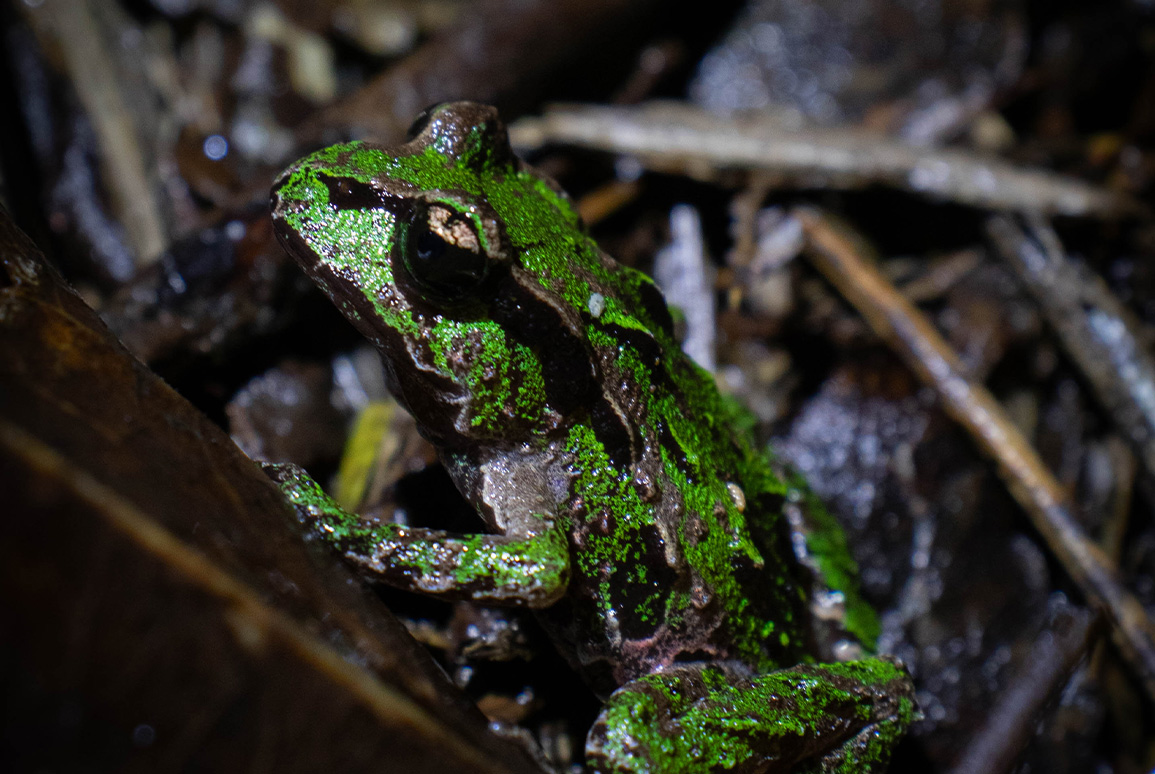
Archey's frog (Leiopelma archeyi) is found only in the Coromandel Peninsula and near Te Kūiti in the North Island of New Zealand and has changed little over the past 200 million years. The species does not have many typical traits of frogs: it has no ears, it does not vocalise, and it isn't very good at jumping.
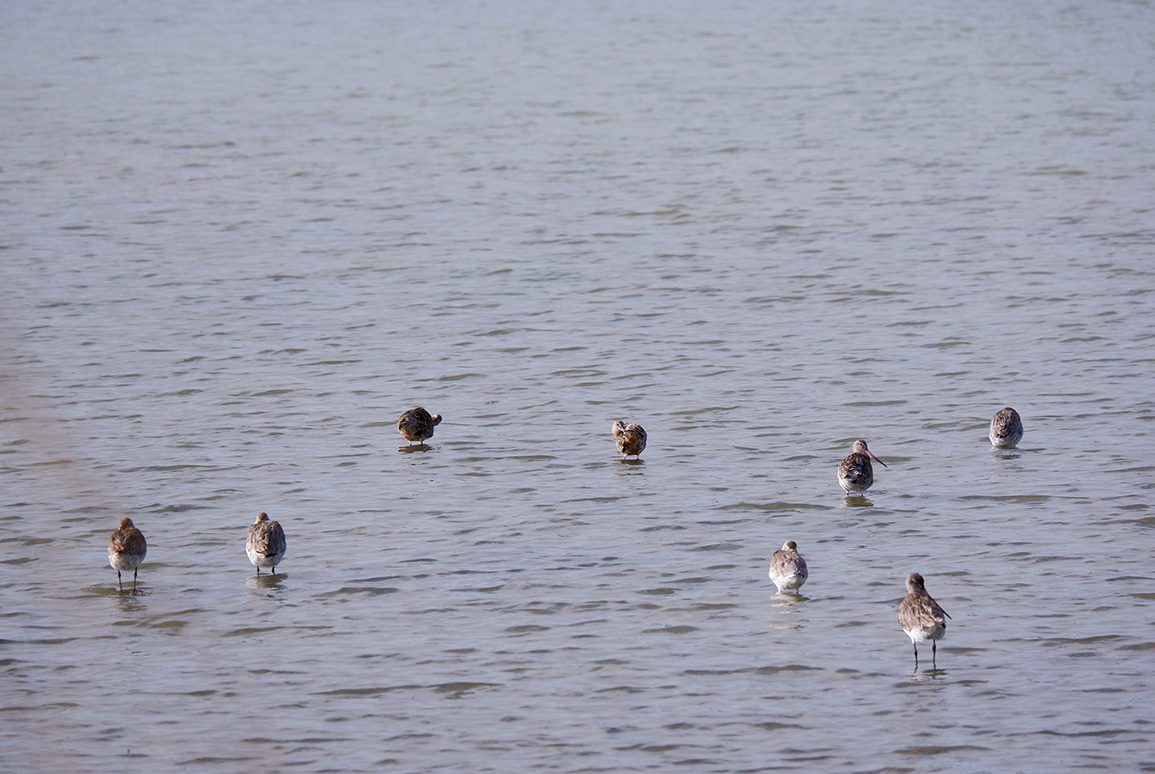
The bar-tailed godwit (Limosa lapponica) is a large migratory wading bird. The 11,000 km migration of the subspecies Limosa lapponica baueri across the Pacific Ocean from Alaska to New Zealand is the longest known non-stop flight of any bird, and also the longest journey without pausing to feed by any animal.
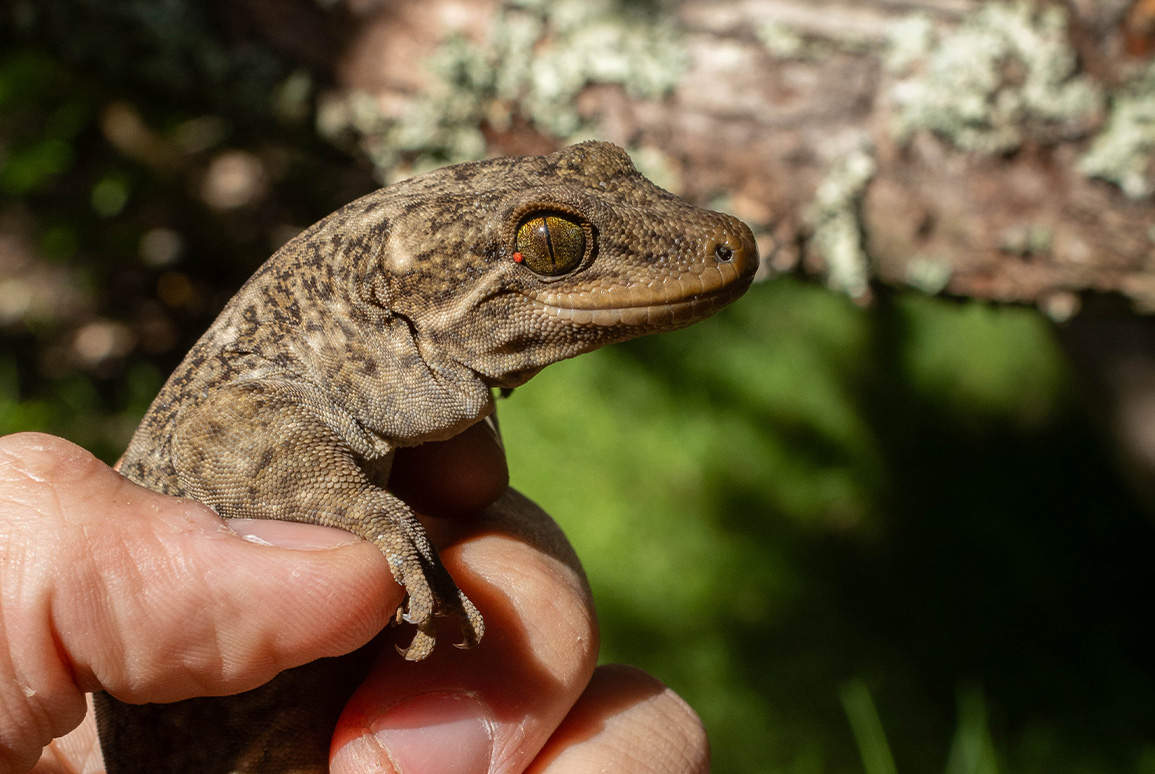
Duvaucel's gecko (Hoplodactylus duvaucelii) is a species of lizard regarded as At-Risk by the Department of Conservation. These are the largest living geckos in New Zealand. Predator control is critical to enabling their long-term survival, and there is concern about the effect of climate change on the species' habitat.
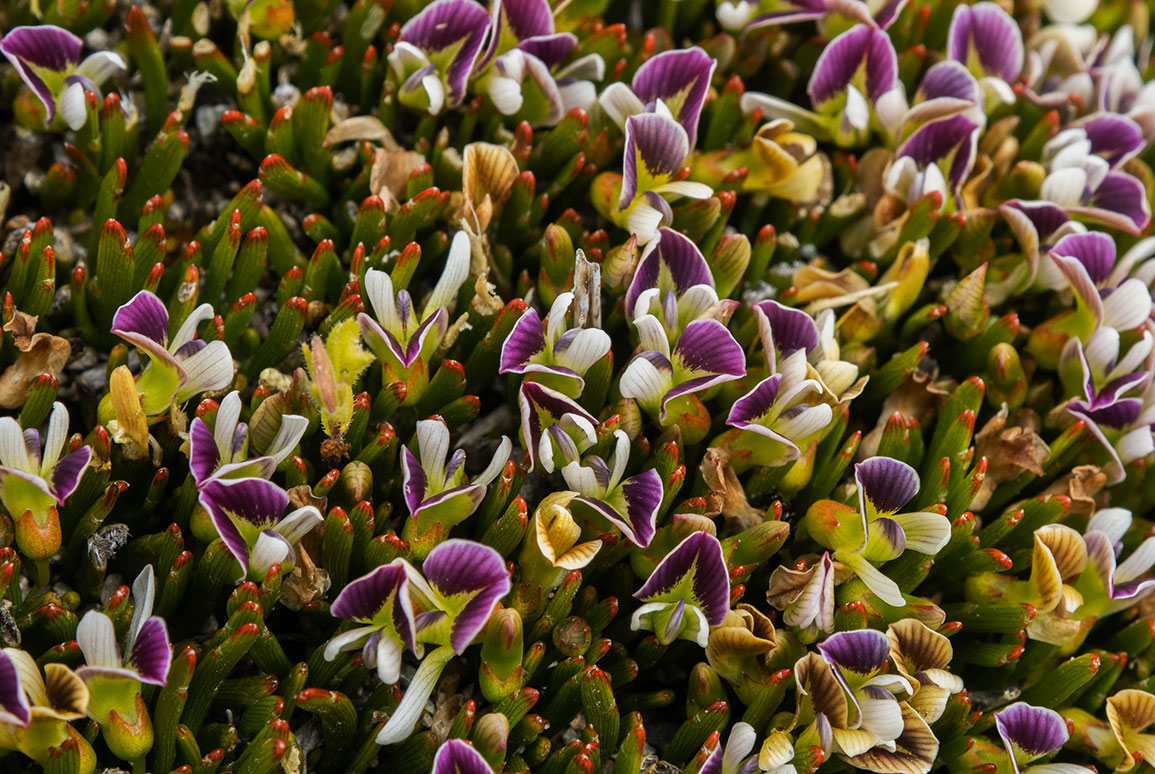
Dwarf Broom (Carmichaelia nana) is a species of plant found in both the North and South Islands considered to be Threatened-Nationally Vulnerable.
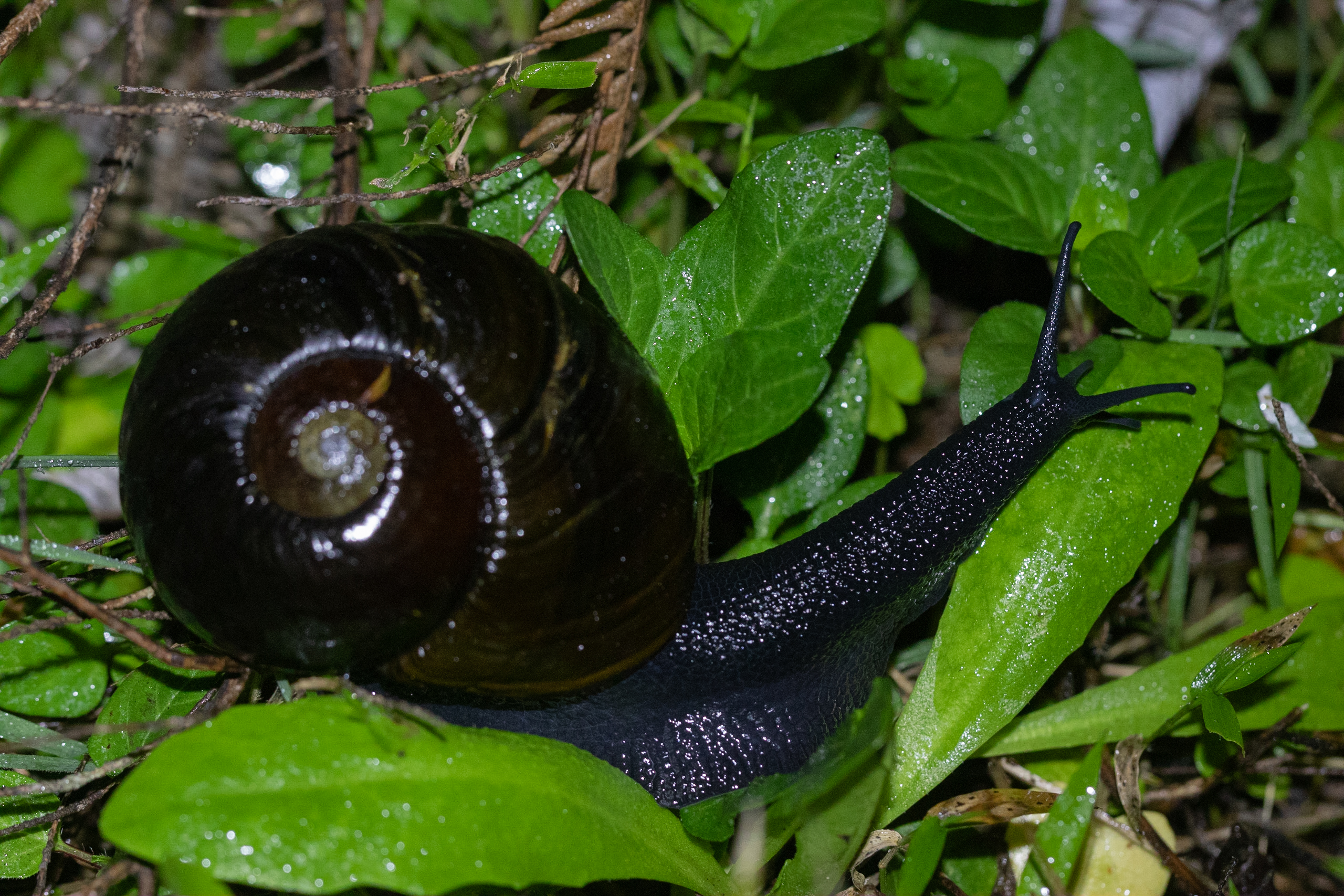
Kauri snails | pūpūrangi (Paryphanta watti) is a species of large land snail, found in the Aupōuri Peninsula, at the northern tip of the North Island. Kauri snails are carnivorous and predatory, feeding primarily on earthworms. Human activity has greatly reduced the range of the species, but predation by rats and pigs is their greatest threat. Their conservation status is Nationally Critical, which is close to extinction.
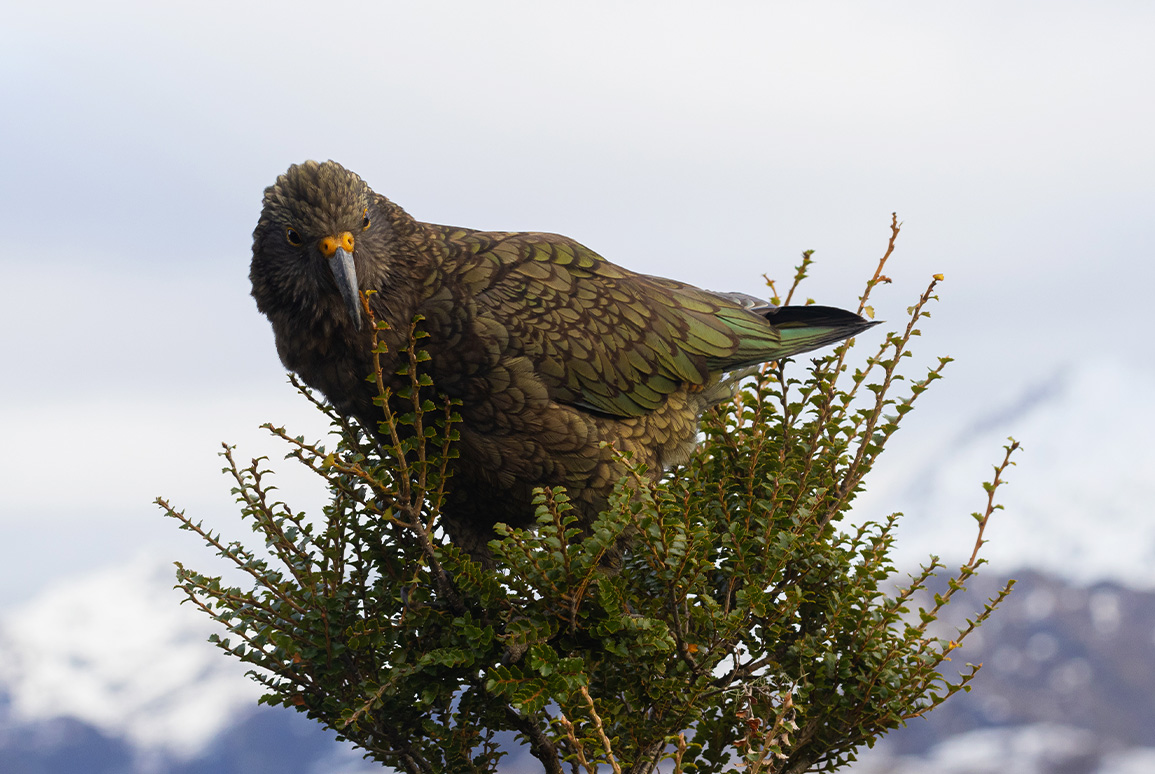
Kea (Nestor notabilis) are found on the South Island. These endangered, highly social birds live in groups and respond poorly to isolation in captivity. Well-known for their curiosity and cognitive abilities, kea have been observed to demonstrate impulse control and forward-planning, as well as problem- and puzzle-solving, and working together to achieve a desired outcome.
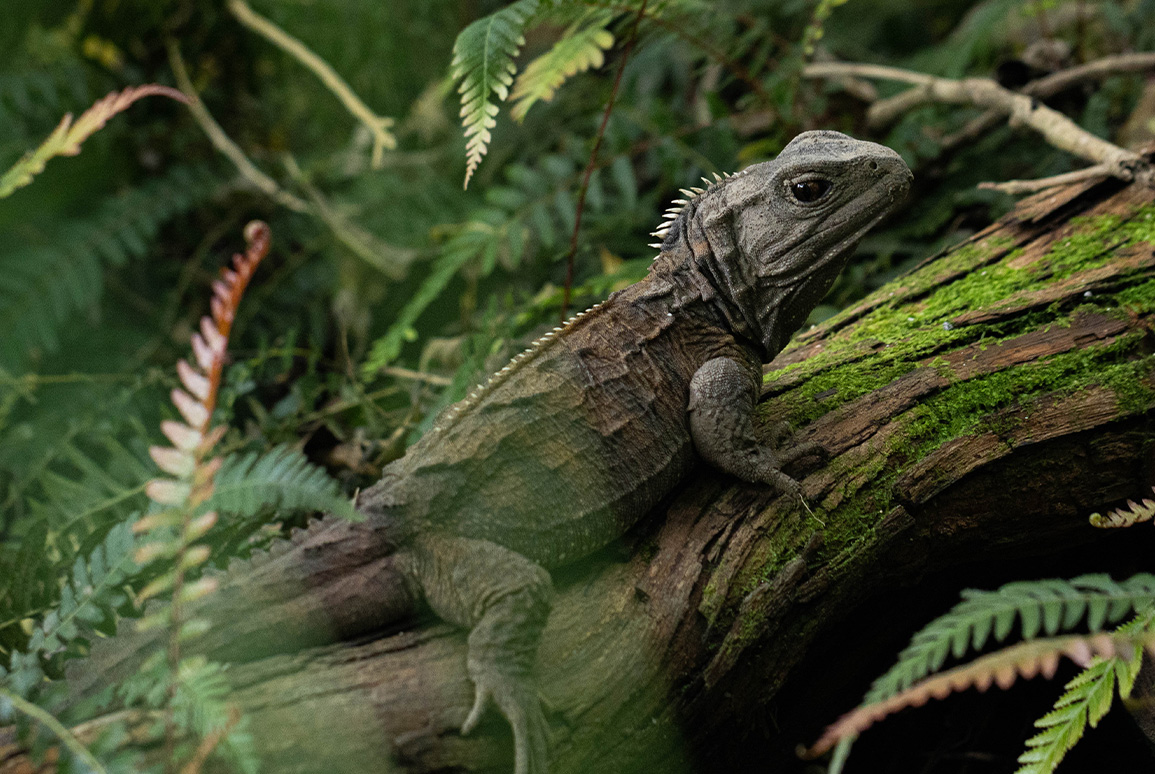
The tuatara (Sphenodon punctatus) is one of New Zealand’s best-known native animals. Despite its close resemblance to lizards, tuatara are the only living member of a distinct and different order of reptiles: Rhynchocephalia. The tuatara has been protected by law since 1895 and is currently listed as At-Risk. Tuataras are the largest reptiles in New Zealand.
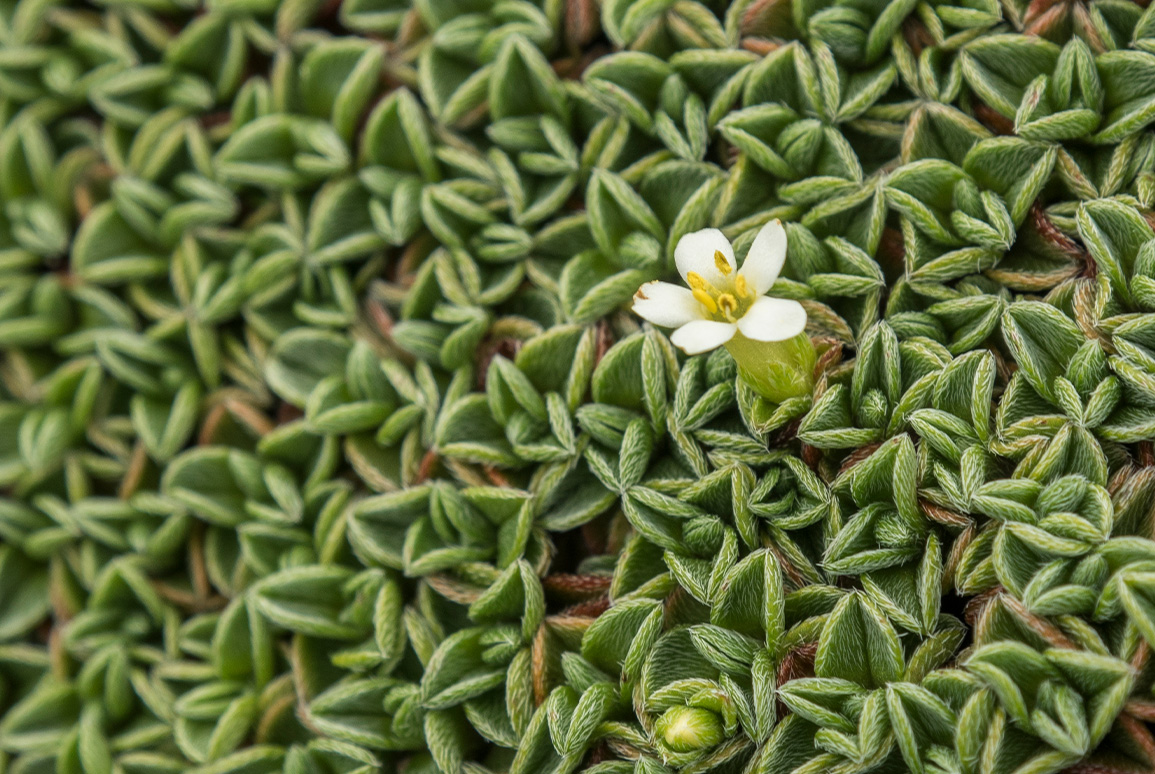
Myosotis glabrescens is a plant found in Otago on the South Island. Its existence is known only from one site and a few gatherings made in the Hector Range, east of Lake Wakatipu. For this reason, it is listed as Data Deficient, but it is considered to be Threatened – Nationally Critical.
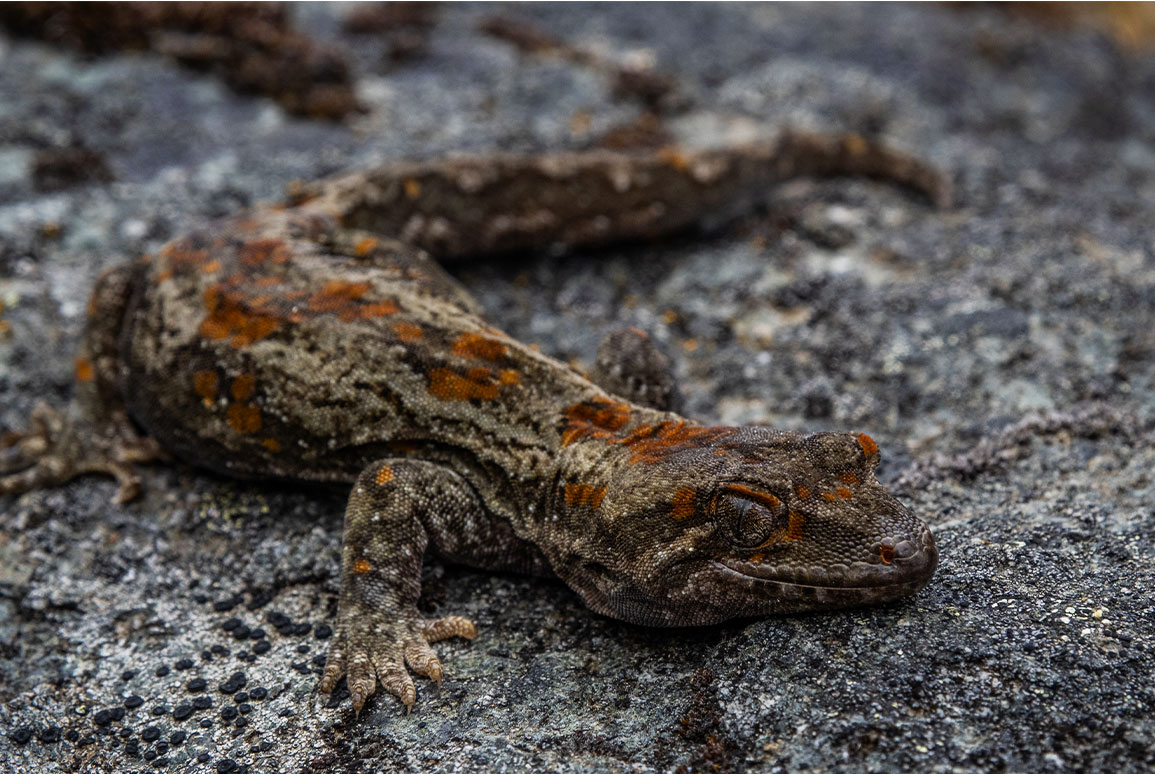
Similarly, very little is known about the Orange-spotted Gecko (Mokopirirakau "Roys Peak"). Found in the mountainous areas of central and western Otago, there has been little opportunity for researchers to search for these reptiles and the total population size is unknown. Many of the Mokopirirakau geckos have become endangered, and the Orange-spotted Gecko is Threatened–Nationally Critical.
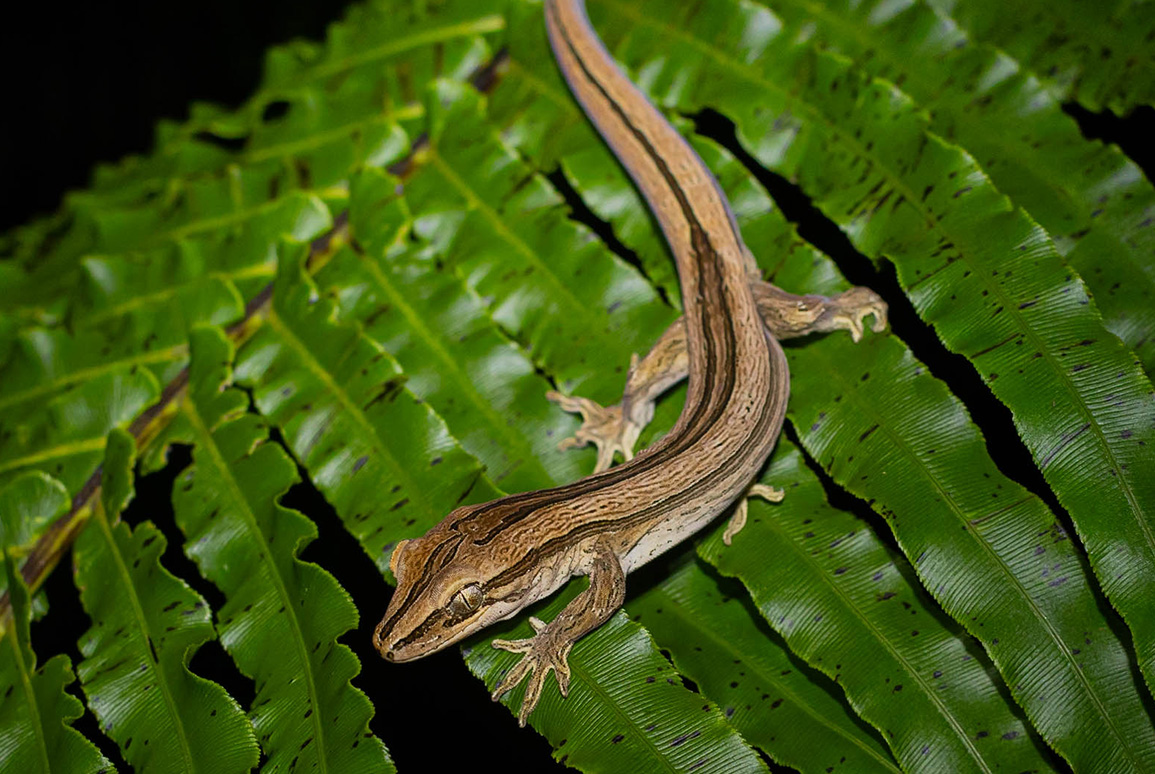
Northern striped gecko (Toropuku inexpectatus) are found on the Coromandel Peninsula. Listed as Threatened - Nationally Vulnerable, its specific name 'inexpectatus' is the Latinisation of ‘unexpected’, referring to its unexpected discovery in the Coromandel hundreds of kilometres from its closest relative.
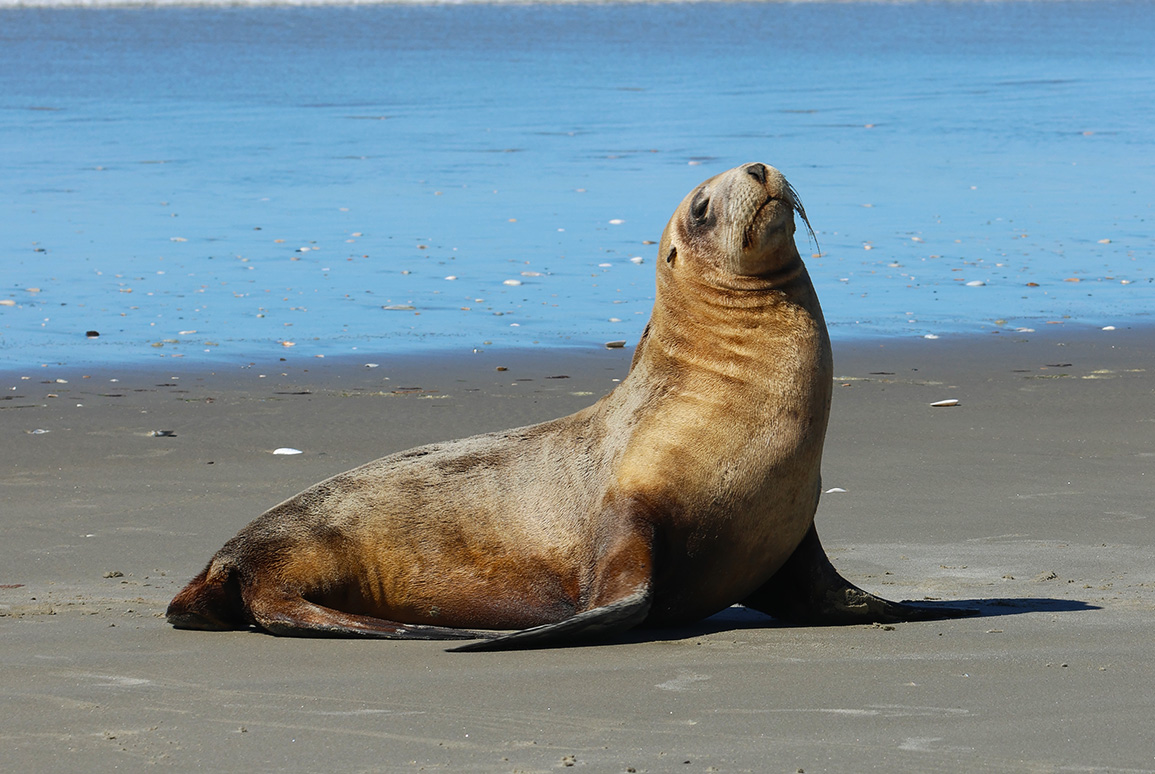
Before the arrival of humans, the New Zealand fur seal | kekeno (Arctocephalus forsteri) bred around all of New Zealand. Commercial hunting from the 18th century until the late 19th century reduced the population to near extinction. The species is protected by the Marine Mammals Protection Act 1978, which works to conserve marine animal species; it specifies that all wild pinnipeds cannot be touched or fed.
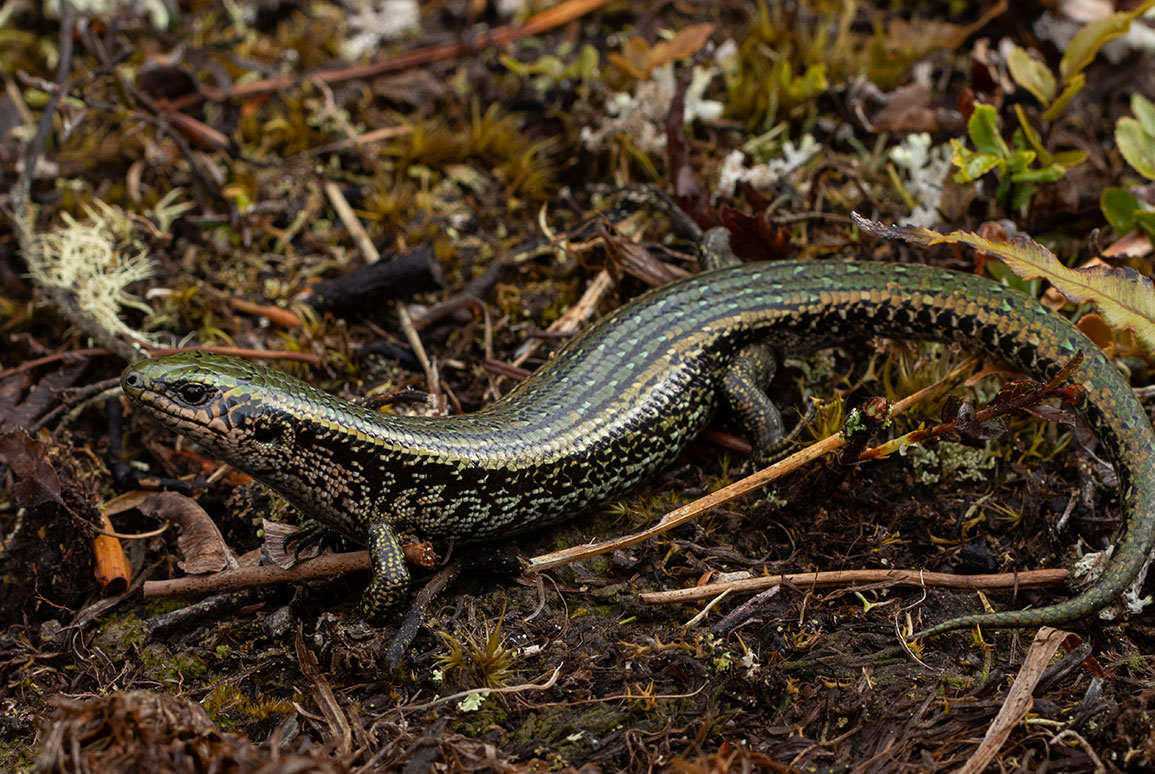
Small isolated populations of the Southern green skink (Oligosoma chloronoton) can be found in Southland, and there has been a severe decline in both distribution and abundance over the past three decades, leading to its status as Threatened - Nationally Critical.
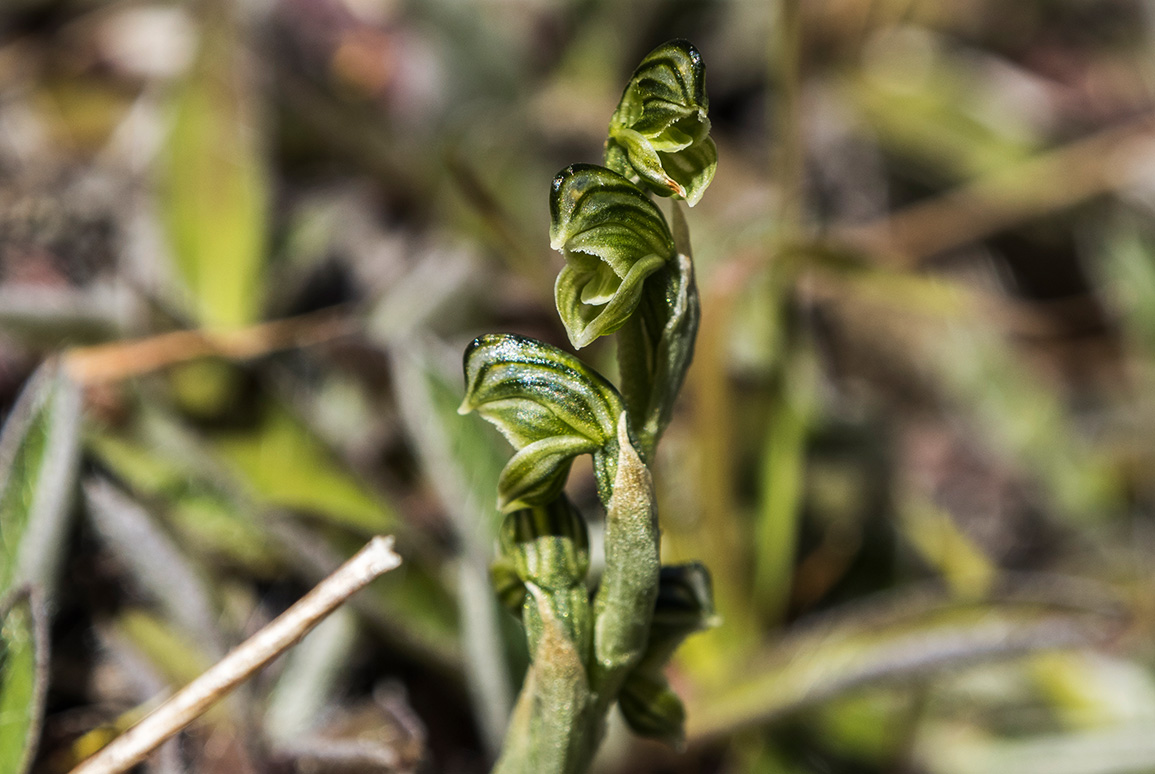
The swan greenhood (Pterostylis tanypoda) is a native species of greenhood orchid found on the South Island. It was first described in 1997, and is an apparently naturally uncommon, biologically sparse species. At only 20 – 200mm tall, it is easily overlooked and its exact distribution and population size remains unclear.
Due to small populations and already dwindling numbers, and New Zealand’s relative isolation, many of these native species are particularly susceptible to the impacts of climate change. However, about 30% of New Zealand is protected conservation land. Through our ecology and biosecurity work, Boffa Miskell supports government aims to save the diversity of remaining species, and can assist Councils that are trying to restore habitats within their region. Boffa Miskell has many suitably qualified herpetologists and specialist ecologists who have the required permits from the Department of Conservation (DOC) to survey and handle reptiles and amphibians.

